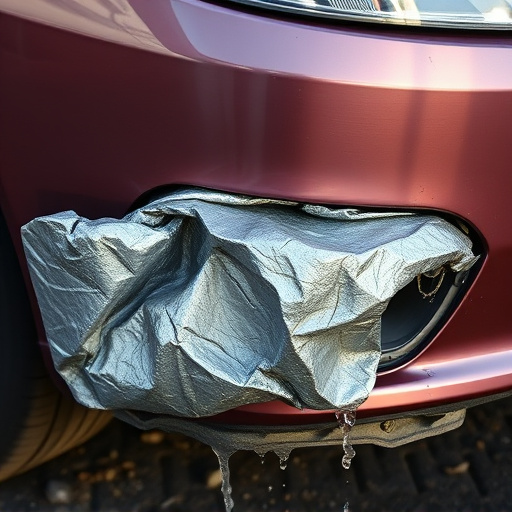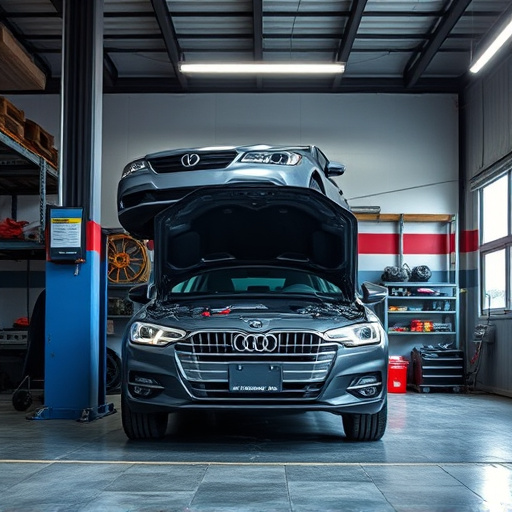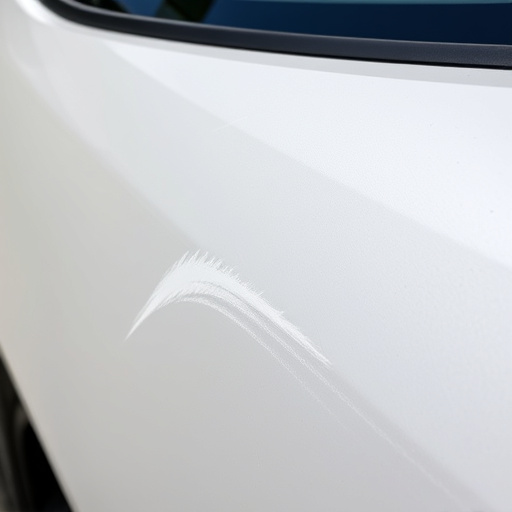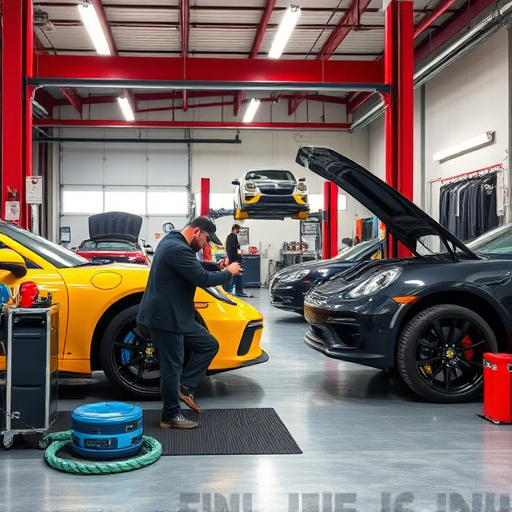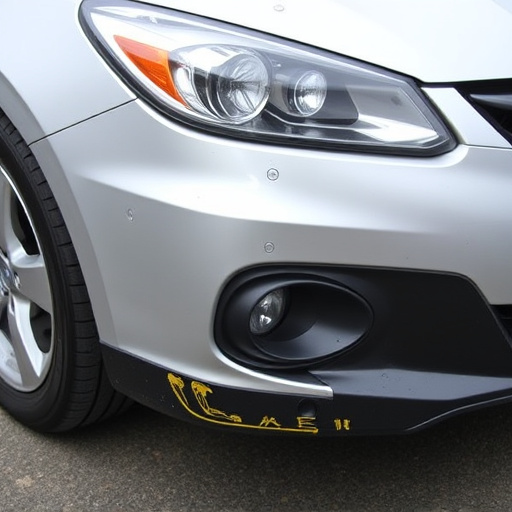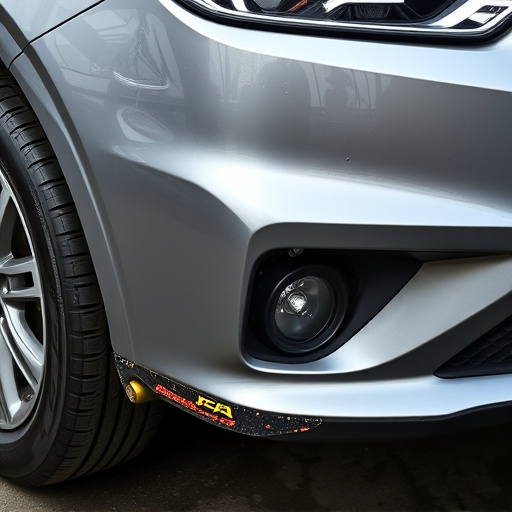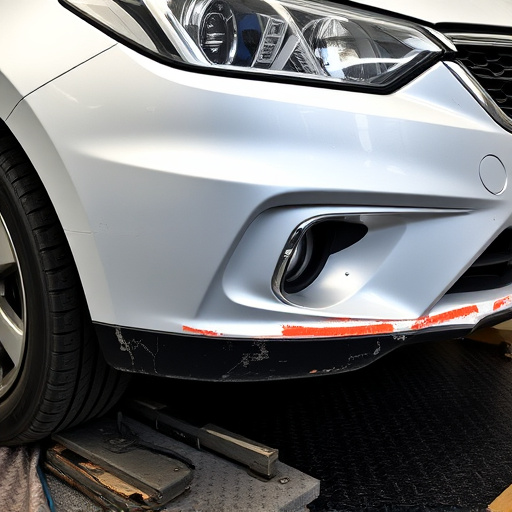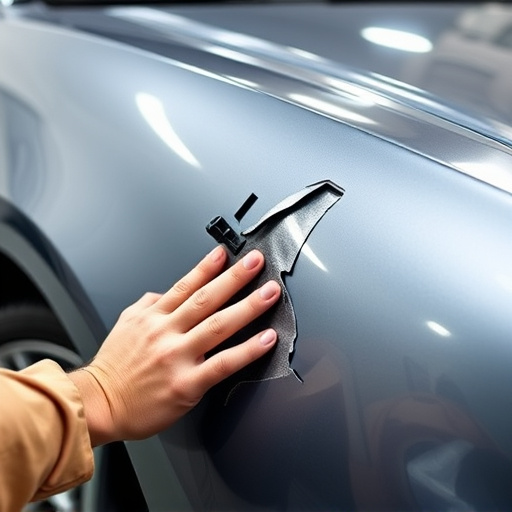Collision repair certification is a crucial step for automotive professionals, ensuring they meet industry standards in frame work, painting, and welding techniques through theoretical exams and practical demonstrations. This certification enhances career prospects, boosts income potential, and ensures high-quality service for auto shops. Preparing effectively involves understanding the exam outline, engaging in hands-on practice, utilizing study resources, and reviewing past exam questions. Passing this certification opens doors to better industry opportunities.
In today’s automotive industry, a collision repair certification is more than just a qualification—it’s a promise of quality. This comprehensive guide explores the essential steps towards achieving your frame, paint, and welding collision repair certification. We’ll delve into the strict requirements set by leading industry standards, uncover the numerous advantages of earning this credential, and provide practical tips to help you prepare and pass your exam with flying colors. Elevate your skills and stand out in a competitive market with this valuable asset—your collision repair certification.
- Understanding Collision Repair Certification Requirements
- The Benefits of Earning a Frame, Paint, and Welding Certification
- Preparing for and Passing Your Collision Repair Certification Exam
Understanding Collision Repair Certification Requirements
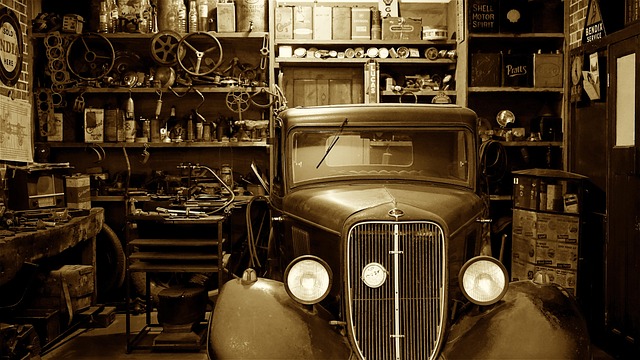
Collision repair certification is a crucial step for professionals aiming to excel in the automotive industry. To become certified, individuals must meet specific requirements set by renowned industry bodies. These standards ensure that collision repair technicians possess the necessary skills and knowledge to handle frame, paint, and welding work with precision and expertise.
The certification process typically involves a combination of theoretical exams and practical demonstrations. Aspiring technicians need to demonstrate proficiency in various techniques, including paintless dent repair and auto detailing, to restore vehicles to their pre-accident condition. Moreover, understanding the intricate processes of frame straightening and precise painting is essential for any aspiring auto collision center specialist.
The Benefits of Earning a Frame, Paint, and Welding Certification

Earning a collision repair certification for frame, paint, and welding work opens up numerous benefits for both individuals and automotive body shops. For professionals, this credential signifies a high level of expertise in their field, enhancing employability and earning potential. It demonstrates a commitment to quality and safety standards, which are paramount in the demanding world of automotive repairs. This certification can lead to better job opportunities within specialized areas, allowing technicians to pursue careers focused on frame straightening, intricate paint jobs, or precise welding – skills that are in high demand due to the increasing complexity of modern vehicles.
For automotive body shops, having certified staff ensures consistency in service quality. Certified technicians follow standardized procedures for frame repair and alignment, meticulous paint application techniques, and safe, effective welding practices. This level of professionalism translates into happier customers and a positive reputation for the shop. It also facilitates access to wider networks and potential partnerships within the industry, fostering growth and competitiveness in the competitive automotive repair landscape.
Preparing for and Passing Your Collision Repair Certification Exam

Preparing for your collision repair certification exam is a crucial step in advancing your career in the auto body shop or collision repair center industry. It’s essential to understand that this isn’t just about memorizing facts; it’s about demonstrating your practical skills and knowledge. Start by familiarizing yourself with the specific exam outline provided by the certifying body, focusing on key areas such as frame straightening, paint application techniques, and welding procedures. Engage in hands-on practice sessions to refine your skills, ensuring you’re comfortable with the tools and equipment commonly used in car damage repair.
Many collision repair centers offer study resources and practice exams to help candidates prepare effectively. Utilize these materials, join study groups, or consider enrolling in preparatory courses. Additionally, review past exam questions and analyze areas where you might need further reinforcement. Remember, passing this certification exam not only validates your expertise but also opens doors to better opportunities within the industry, making it a significant milestone in your professional journey.
Earning a collision repair certification in frame, paint, and welding is a significant step towards becoming a skilled professional in the automotive industry. By understanding the requirements, leveraging the benefits, and preparing thoroughly, you can not only enhance your career prospects but also contribute to ensuring safe and high-quality vehicle repairs. The collision repair certification process equips you with the knowledge and skills needed to navigate complex repairs, fostering confidence and precision in your work.
